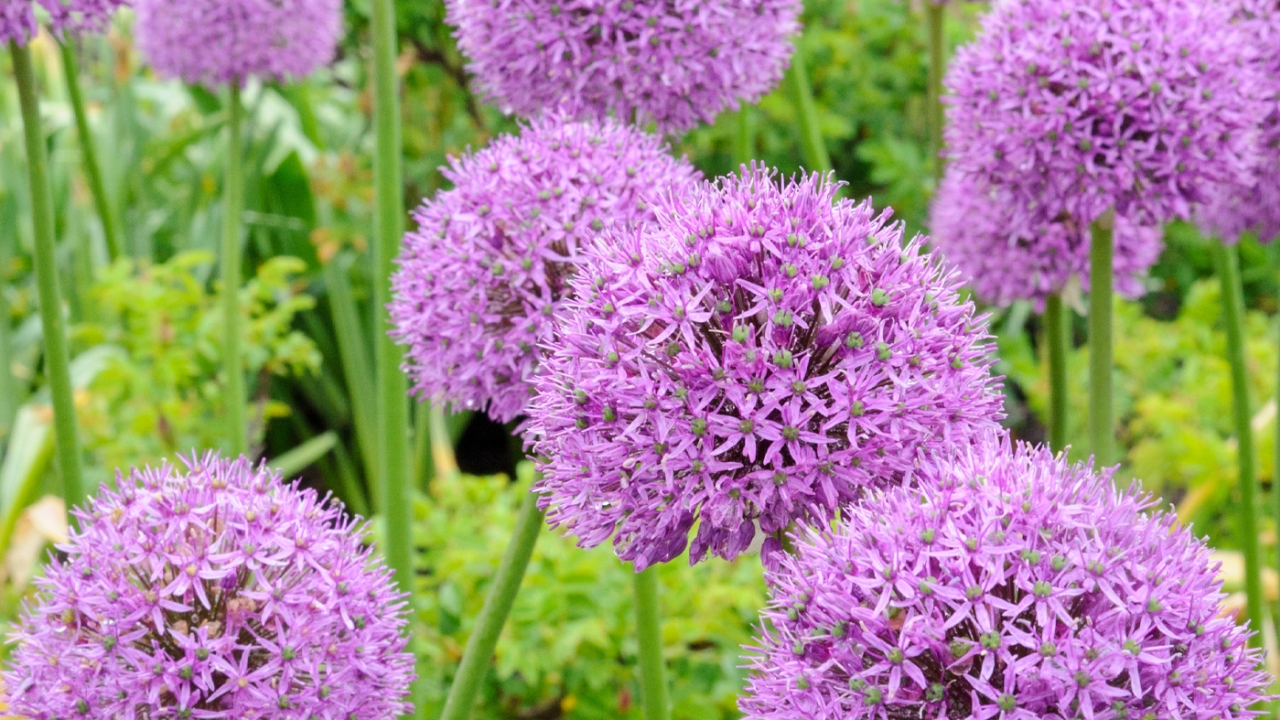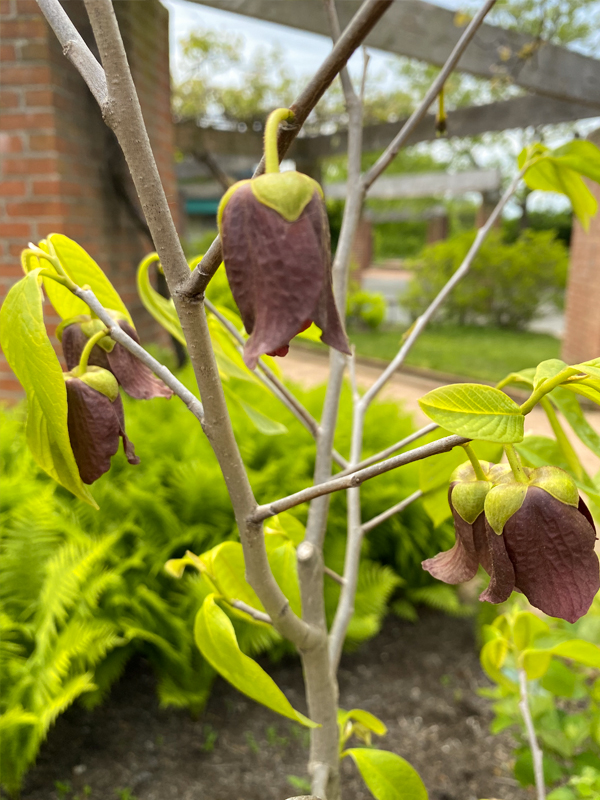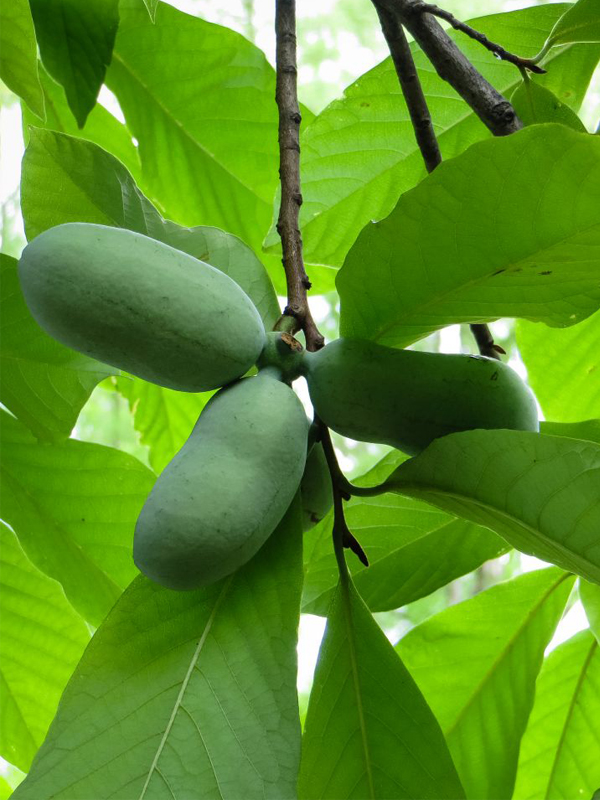

Plant Profiles
Pawpaw
Asimina triloba
One of the most delightful and perhaps underused smaller trees is the native American pawpaw (Asimina triloba). Large, dangling leaves give the plant a tropical look.
But it’s the fruit—the largest in North America—that is most noteworthy with its almost indescribable flavor—a mix of banana, apple and hints of mango, vanilla and citrus. Some of the fruit's common names hint at how delicious it tastes: Indiana banana, custard banana and American papaw. It’s been used in custards, ice cream, breads and smoothies. Because the ripe fruits bruise easily and are highly perishable, they seldom are sold in stores.
“It was really part of the forest landscape in the 1500s. As explorers crossed and expanded boundaries, they relied on pawpaw fruits.” Explorers Lewis and Clark subsisted on pawpaws alone for three days during their explorations. Thomas Jefferson planted the trees at Monticello and sent the seeds to Europe. And, indigenous people from the East Coast to the Midwest relied on the fall fruits as an important part of their diet.
The pawpaws’ growing range extends from Ontario, north of Lake Erie and east to New York, all the way down to Florida and Texas and west to Nebraska. Throughout this area, towns like Paw Paw, Michigan, and many lakes were named after the abundant trees. Several midwestern states hold Paw Paw Festivals in late summer.
The native range is incredible—it’s found across 25 states.
In its native habitat, pawpaw is an understory tree found growing along the edge of floodplain forests, wooded slopes, along streams, in ravines and sometimes in drier upland woods. It is common in southern and central Illinois, but uncommon or absent in northern Illinois. Overall height can be 15 to 20 feet tall or more.
Lindsey Muscavitch, Assistant Horticulturist, first noticed pawpaws while hiking in Indiana. “It was amazing—it’s that kind of moment when you realize this crazy tropical thing grows in Illinois and I could have it in my own backyard if I wanted to.”



In the Garden
Native pawpaws form a dense pyramidal shape in full sun, but they can also form a thicket by suckering in a shade garden. Purplish-red cup-shaped flowers appear from April through June, and when pollinated, they give way to yellow-green fruits that ripen in late summer. Planted alongside a water feature, pawpaw’s 6- to 12-inch pendulous leaves create an exotic look. They can be used as part of an edible landscape or in a rain garden. Fall color may be a brilliant gold or a buttery or pale yellow. Deer and other herbivores, like rabbits, generally avoid the plants. However, ripe fruits are sought by raccoons, opossum, fox, and squirrels. “It has a beautiful fruit and it’s a very individual look, a beautiful look,” Hilgenberg says.
Culture
Provide a spot with full sun (6 hours direct light daily), or partial shade (4 hours of sun), in a place that has medium to moist, fertile soil. Pawpaws can be grown in a rain garden or in an area that receives regular watering especially during extended dry periods. Once established, they are often heat and drought tolerant, but excessive dryness and standing water are detrimental. Although the foliage has a droopy look in full sun, the leaves are held more upright in shade.
Pollinators
Bees, beetles and flies are among the pollinators seeking the slightly fragrant flowers. This is because the color of the flowers and the scent—that of rotting carrion or fermenting grapes, which isn’t really noticeable unless you put your nose in the bloom. The plant is host to 12 species of butterflies and moths, including the pawpaw sphinx moth. And, it is the only host plant for the spectacular female Zebra Swallowtail butterfly, which will lay its eggs on the leaves. Although the plants are generally free of pests and disease, caterpillars can put some holes in the foliage but the damage is usually minimal and unnoticeable.
Fruits
A lone pawpaw generally will not produce fruit unless there is another pawpaw nearby. That’s because almost all pawpaw flowers are self-incompatible, which means that pollen produced on one plant cannot pollinate flowers on the same plant. Instead, to produce fruit, a pawpaw flower must receive pollen from flowers on another pawpaw tree.
“In past years the cultivars flower around late May into early June,” Hilgenberg says, “and, the native species flowers about June 26th. They flower over this long period of 3 to 4 weeks.” Fruits start to ripen in August and September. When they are ripe, the fruits naturally fall from the tree. If picked too early, they will not finish ripening properly or at all. In some cultivars the skin may turn from green to yellow-green, depending on the season and weather. A more reliable clue is a slight softening of the fruit, similar to peaches.
Cultivars
Although they can be difficult to find at garden centers, there are more than 60 pawpaw cultivars with some bearing fruits that weigh up to one pound. The Garden is host to several pawpaws from the native species to cultivars such as ‘Prolific’, a heavy bearing variety with large, early ripening fruit, as well as ‘Mango, ‘Overleese’, and ‘Susquehana’, which produces large fruits and few seeds. A delightful older specimen holds court in the Regenstein Fruit & Vegetable Garden.

